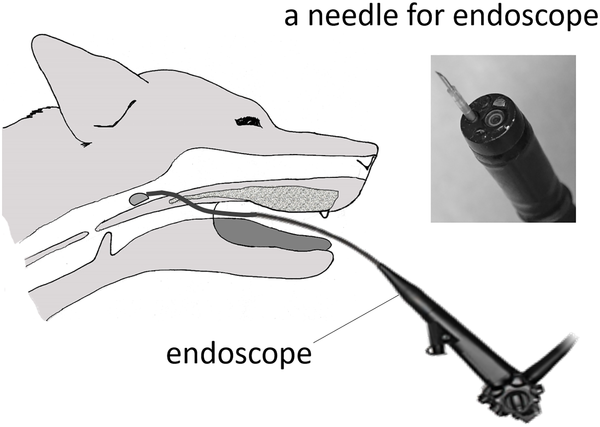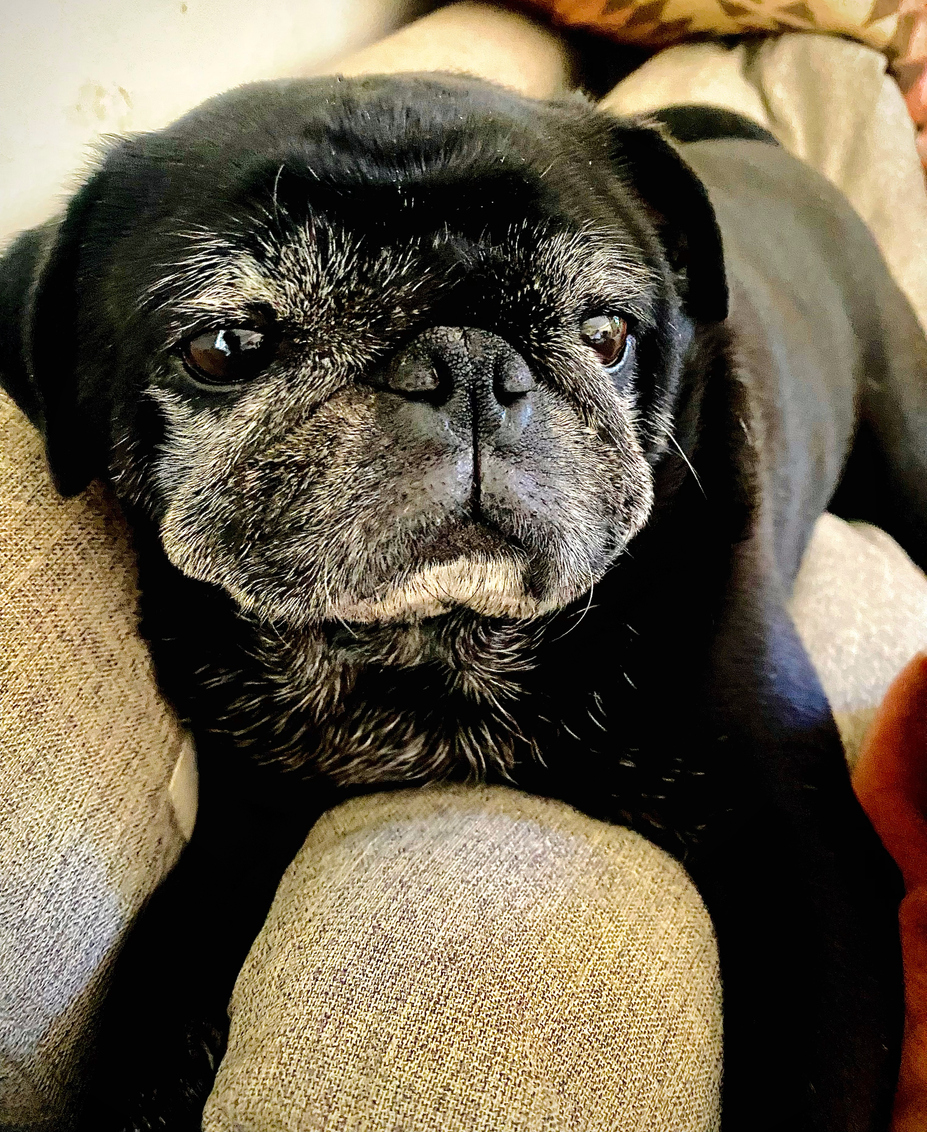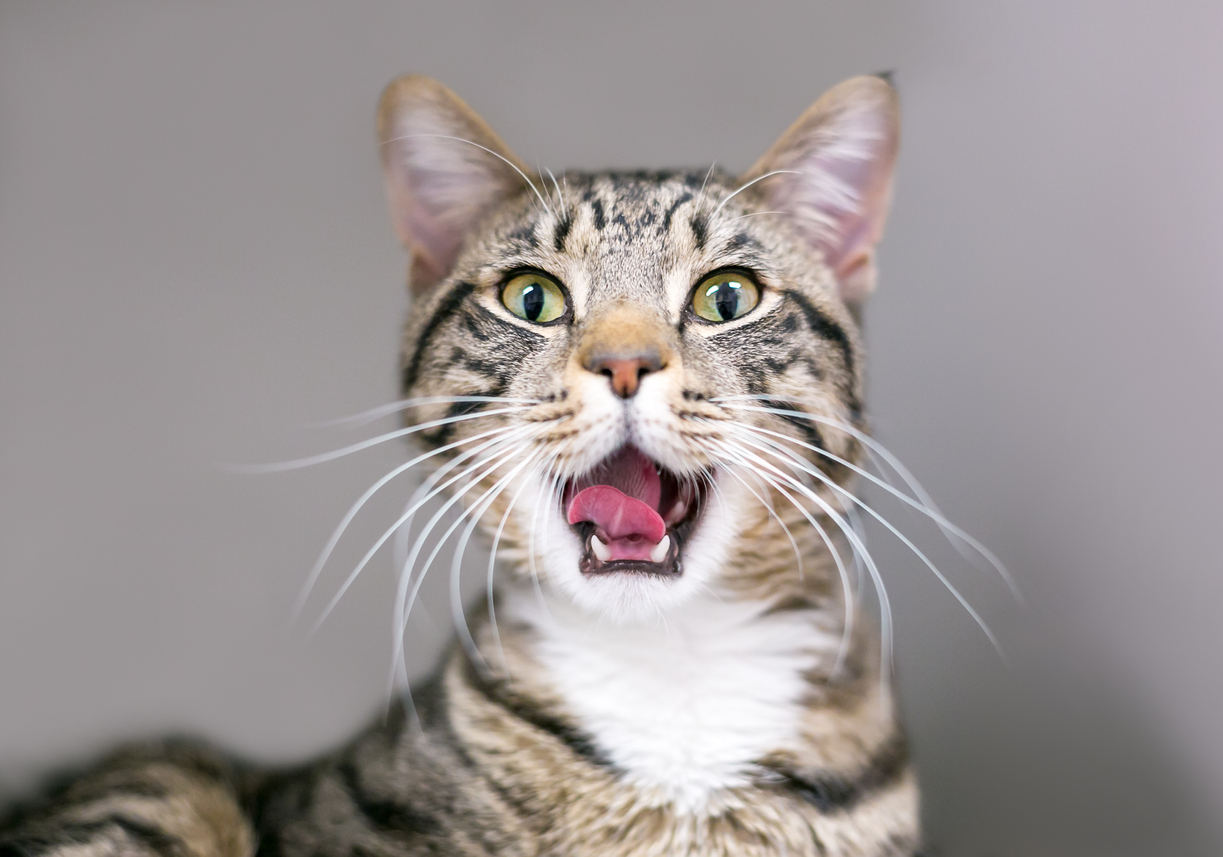Endoscopy (summary)
What is an endoscope and how is it used?
An endoscope is a flexible tube with a viewing port and/or a video camera attachment that is inserted either into the stomach through the mouth or the colon via the rectum. It permits inspection of the inside of these hollow structures. If the stomach is being examined, the esophagus (the tube connecting the mouth and stomach) is also inspected as the endoscope is being passed into the stomach.What types of disease are diagnosed with an endoscopic examination?
The endoscope allows full color viewing of the previously mentioned organs. The examiner can identify abnormalities such as inflammation, abnormal swelling, or areas of scarring or stricture (abnormal narrowing). If a foreign body, such as a bone, stick, rock, toy, coin, or hairball is present, it can usually be seen and retrieved.Can viewing an abnormal area give the diagnosis?
While seeing an abnormal lesion or suspicious area gives your veterinarian valuable information, it is usually necessary to biopsy the area in order to reach a diagnosis. The endoscope has a tiny channel through which a biopsy instrument can be passed. Precise biopsy samples can be taken of any abnormal areas. These samples consist of tiny pieces of tissue cut from the surface tissue or lining of the organ by the biopsy instrument. The tissue samples, called pinch biopsies are then submitted to a veterinary pathologist for microscopic evaluation.What happens if you don't see any abnormal areas?
Many diseases cause changes that can only be detected by histopathology, or inspection of the tissue under a microscope. Therefore, even if the organ or tissues appear normal, biopsies are taken. In many cases, biopsy of the stomach of a vomiting cat or the colon of a cat with diarrhea will be very helpful in determining if disease present.
What if the problem is in the small intestine?
In some cats, it is possible to pass the endoscope through the pylorus into the upper part of the duodenum. This depends on the size of the cat and the size of the endoscope. Unfortunately, the majority of the small intestine is inaccessible to the endoscope. Therefore, other diagnostic tests or procedures are usually required to diagnose many types of small intestinal disease.Can cancer be diagnosed with endoscopy?
In many cases, your veterinarian can diagnose cancer of the gastrointestinal tract using the endoscope. However, some tumors do not affect the inner surface of the stomach or colon. Since the biopsy procedure only samples the inner surface, it is possible to miss detecting a tumor that is present only in the deeper layers of the bowel. In these unusual cases, the biopsies will be normal but the cat continues to experience clinical signs.
In order to reach a diagnosis in these cases, additional tests on the endoscopic biopsies may be needed. Alternatively full-thickness biopsies obtained through an exploratory surgery or non-invasive tests such as MRI may be necessary.
What steps need to be taken to prepare for endoscopy?
It is vital that the inspected organs be empty of all food, water and fecal matter. If the stomach is to be examined, withholding food and water for twelve hours is generally sufficient. If the colon is to be examined, oral medication is begun twelve to eighteen hours before the procedure to remove fecal material from the entire intestinal tract.
Fasting for twelve to eighteen hours is also necessary so new fecal material does not form. On the morning of the procedure, one or more enemas are given to remove any remaining stool from the lower intestinal tract.
Is general anesthesia required?
Yes. It is impossible to pass an endoscope safely into a conscious cat's stomach or colon. In most cases, a short-acting anesthetic is used, and the cat is discharged once its effects have worn off.



